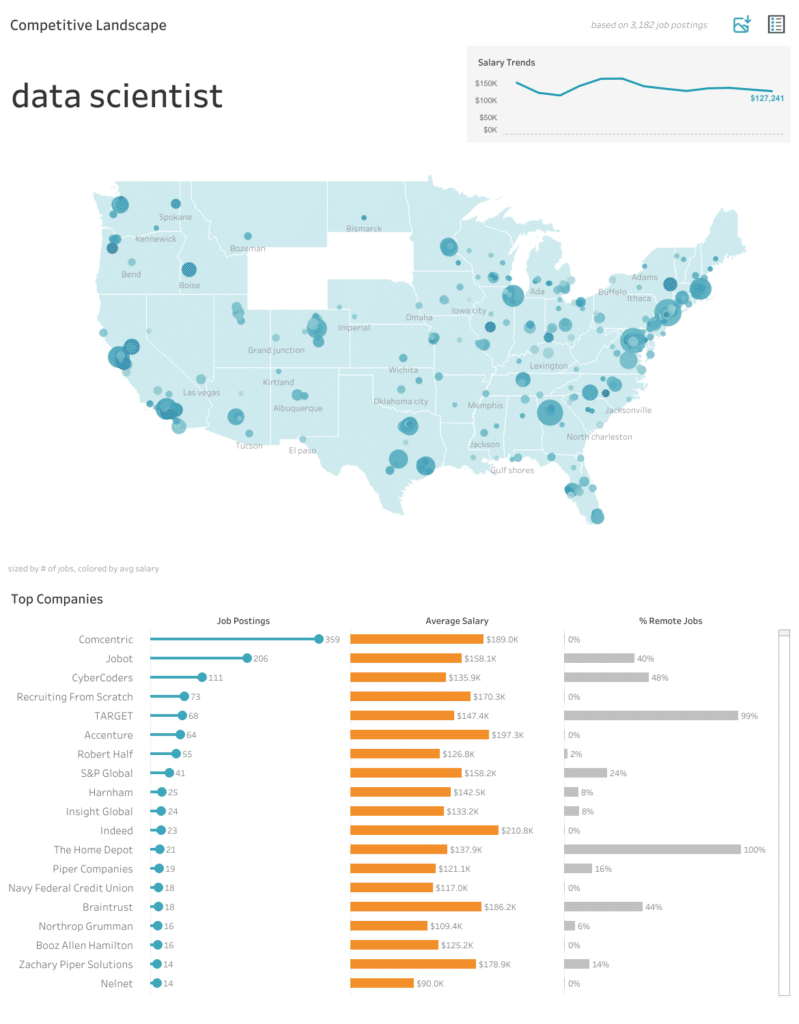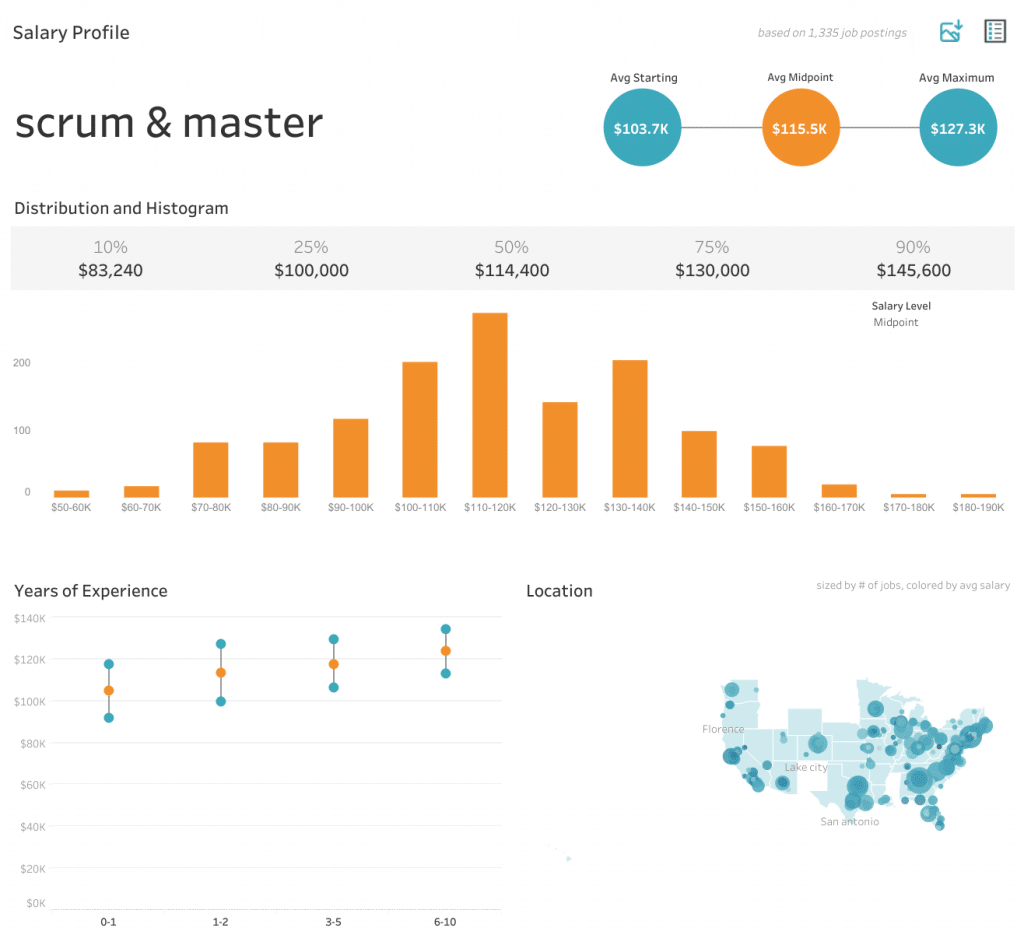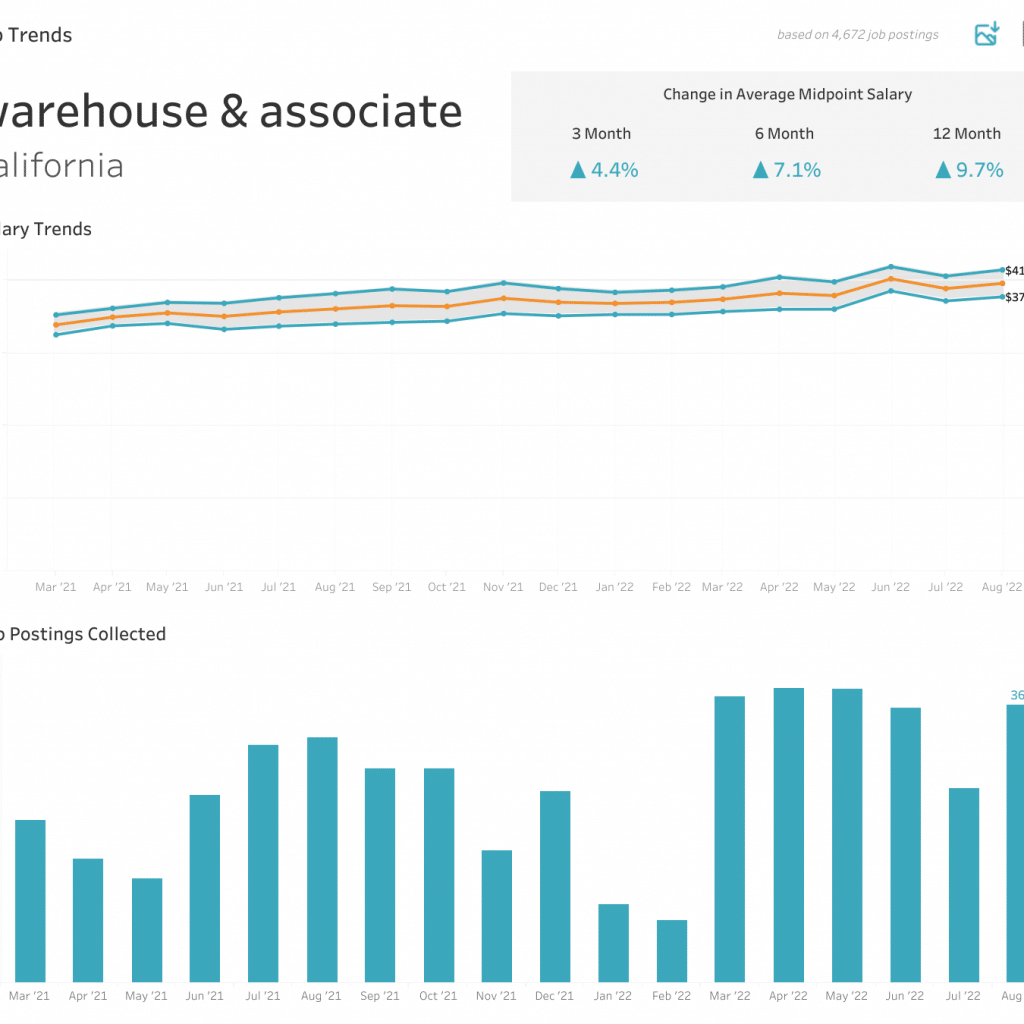Pay transparency laws have come upon the US quickly and have found a profound impact on the importance of the Compensation function. Except in the public sector, few Organizations have had as many eyes scrutinizing their pay practices as they do now. Shifting laws and a tight labor market have made getting pay right more important than ever before, and knowing how to advertise pay is now a foundational responsibility of the Compensation and Recruiting functions.
How Much To Share?
The question that many Organizations are facing now is understanding how much of the job’s pay range to share. The laws are broad and open to interpretation. Enforcement of the new(er) is yet to be seen, especially in Colorado. Broad laws and little repercussions have left Organizations with a wide set of options. An analysis of our more than 8 million job postings in Squirrel shows that companies, on average, are posting ranges that are approximately 28% wide, from minimum to maximum. This suggests that most companies are posting only a subset of their pay ranges.
Pay Transparency Laws Vary by State
Both New York and Colorado, which already have pay transparency laws on the books, provide Organizations flexibility in what is posted. Both New York and Colorado allow states to post, in good faith, what they believe they may reasonably pay for a position.
Colorado’s Equal Pay Transparency Act, states that Organizations must include “A posted compensation range may extend from the lowest to the highest pay the employer in good faith believes it might pay for the particular job, depending on the circumstances. An employer may ultimately pay more or less than the posted range if the posted range was the employer’s good-faith and reasonable estimate of the range of possible compensation at the time of the posting.”
In New York, the law states that “Employers must state the minimum and maximum salary they in good faith believe at the time of the posting they are willing to pay for the advertised job, promotion, or transfer opportunity.” New York is unique in that it allows organizations to act in good faith, posting subsets of the range, rather than their full range.
Both New York and Colorado allow for a fairly broad interpretation of what the ranges may be. California and Washington State, however, leave less open to interpretation.
In California, the new law, which goes into effect January 1st, 2023 states, “ An employer with 15 or more employees shall include the pay scale for a position in any job posting.” This can be found in Senate Bill 1163, Section 2, Paragraph 432.3C (3). This law does not provide language similar to New York’s bill where companies may only post what they reasonably expect to offer for this role. As such, many Organizations may interpret this as the entire range.
The same is true for Washington State, which also becomes effective as of January 1st, 2023. Washington State’s pay transparency bill reads that “Each job posting must include the wage scale or salary range and a general description of all the benefits and other compensation for a specific available position to be offered to the hired applicant.”
Deciding How Much of the Pay Range to Post
For Organizations moving forward with pay transparency they must decide what they are required to post, and then what they should post. The first step in deciding is to review the local laws and ensure compliance. Although Colorado has had very little enforcement of the Pay Transparency laws, New York and California will levy steep fines for violations.
New York may fine up to $250,000 per violation, and California may fine companies up to $10,000 per violation. These hefty fines make it critical for the Organization to ensure compliance, or risk significant penalties.
Posting a Subset of the Pay Range
According to a recent poll on LinkedIn, most companies, given the opportunity, will post only a subset of the pay range. The reasons cited by most Organizations include:
- Better Setting Candidate Expectations – A recent poll by HR Drive suggests that 68% of candidates probably will or definitely will demand the top of the range. However, since most compensation philosophies dictate that employees new to a role would be placed somewhere near the midpoint of the range, posting the full range may set unrealistic expectations, damaging the candidate experience.
- Better Ability to Manage Internal Equity: While one of the stated goals of pay transparency is to improve pay equity, subsets of the range that are aligned to current incumbents can be used to better support managing pay equity efforts.
- Reduce Likelihood of Internal Candidates Demanding Pay Increases: As current incumbents monitor their company’s job postings, employees that are paid low in the range may believe they are being treated unfairly if the posted pay range suggests they are at the bottom of the range. Posting a subset of the range may help to mitigate these situations.
And while posting a subset of the range may have several advantages from the employer’s side, Companies should be aware that some may view it as a disengenious approach to avoid paying high wages. Most compensation practitioners and most compensation philosophies will summarily dismiss this notion, but perception is important.
Posting the Whole Range
Posting the entire pay range, rather than a subset, provides Organizations with a more simplified approach and provides candidates a greater understanding of their potential salary growth. The greatest challenge for recruiting teams, however, will be mitigating unreasonable candidate expectations of top-of-range placement. Recruiting teams will need to be prepared to answer questions about the organization’s Compensation philosophy, and salary range placement. Being able to explain to candidates the performance management will also help this process, and setting candidate expectations.
Deciding how to Manage Pay Transparency
Depending on where your Organization has operations, you may have a variety of options or requirements when deciding how to post your pay ranges. Ensuring compliance with local laws should be your first step, and then deciding what approach best supports the business’s efforts to recruit and retain employees should be your second step.
Leverage Pay Transparency to Make Better Compensation Decisions
As the compensation field continues to evolve, and new data sources such as job postings with ranges become more and more prevalent, the Compensation practitioner has a new source of live, company-specific data. We’ve compiled more than 14 million job postings in the last 18 months that allow your organization to see exactly what other companies are posting. Unlike a salary survey, Squirrel uses publicly available data, so Squirrel data is live (not 90 days old, like surveys) and is not anonymous like salary surveys must be. If you want to try it yourself, give it a try today and sign up for our freemium Squirrel
What Can Squirrel Do?

See Who is Hiring and What they are Paying
This level of detail and timeliness of salary data that Squirrel provides has never been possible using traditional salary surveys. With Squirrel, you can easily see who is hiring, what they are paying, and how many are being hired remotely. You can even drill into each company to see exactly the roles and jobs they have posted.

Get Better Data About Jobs
One thing that Squirrel excels at is its ability to show detailed data, with the ability to drill into different locations, pay groupings, and years of experience. Whether it’s a high-demand job or a job that’s hard to find, with more than 14 million job postings, Squirrel probably has what you’re looking for.

Track Wage Growth
If your salary surveys haven’t felt like they’ve been keeping up with wage growth, now you can confirm your suspicions. Since Squirrel collects so much data every day, tracking wage growth on a monthly basis is now possible.



No responses yet